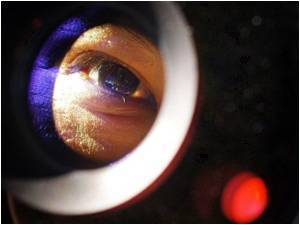
Previous research has established that both xanthelasmata and arcus corneae are deposits of cholesterol. However, around half of the individuals who have either or both condition will not test positively for high cholesterol in a blood test.
The researchers wanted to investigate links between xanthelasmata and/or arcus corneae and an increased risk of heart attack, heart disease, stroke, severe thickening of the arteries or premature death in the general population, as the evidence in this area is lacking.
Indeed, many patients are referred to dermatologists so that xanthelasmata can be removed, they add.
They surveyed 12,745 individuals who had participated in the Copenhagen City Heart Study. The participants were aged between 20 and 93 and were free of heart disease when the study began. They were followed from 1976-8 until May 2009 with 100% complete follow-up.
At the beginning of the study 563 (4.4%) of participants had xanthelasmata and 3,159 (24.8%) had arcus corneae.
Advertisement
The results show that in all age groups for both men and women, the risk of having a heart attack, developing heart disease or dying within a ten year period increased in individuals with xanthelasmata. This increased risk is independent of other well-known risk factors such as gender, smoking, obesity or high blood pressure and cholesterol levels.
Advertisement
In contrast, the results show that arcus corneae is not a significant independent risk predictor for heart attack or heart disease.
The authors conclude that the presence of xanthelasmata could help clinicians when they diagnose heart disease and associated conditions. And they add that their findings “could be of particular value in societies where access to laboratory facilities and thus lipid profile measurement is difficult.”
An accompanying editorial concludes that, overall, the evidence highlights the importance of a comprehensive physical examination and suggests that xanthelasmata could be used by general clinicians to help identify people at higher risk of cardiovascular disease.
Source-BMJ














